Prokopi is a picturesque village in northern Evia, nestled in the lush plain of the Kireas River. Home to around 1,000 permanent residents, it is famous for being the resting place of Saint John the Russian, one of the most revered figures in Eastern Orthodoxy. His relics, brought from Cappadocia by Greek refugees after the Asia Minor Catastrophe, are housed in an impressive church that draws thousands of pilgrims each year from all over Eastern Europe.
Beyond its religious significance, Prokopi is a fantastic stop for travelers en route to northern Evia’s beaches and mountains. The village is surrounded by stunning natural landscapes, from ancient plane forests to deep quarry lakes, and is also well-known for its excellent meat taverns and traditional Greek products.
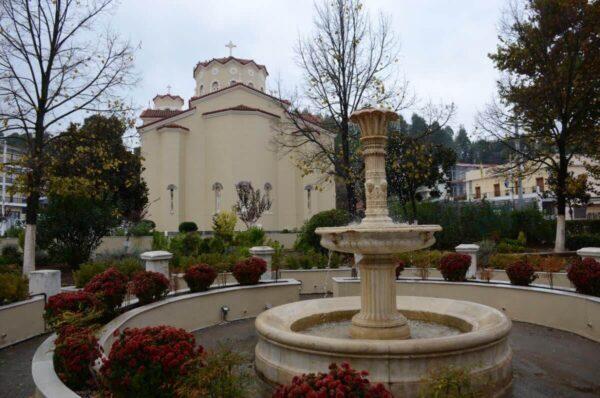
Affiliation disclosure: By purchasing goods or services via the links contained in this post, I may be earning a small commission from the seller's profit, without you being charged any extra penny. You will be thus greatly helping me to maintain and keep enriching this website. Thanks!
How to Get to Prokopi
By Car
From Athens, Prokopi is about 120 km away (a 2-hour drive). The easiest route is via the Chalkida – Edipsos National Road. From Chalkida, follow signs toward Mantoudi – Edipsos, and after 50 km, you will reach Prokopi.
From Thessaloniki, the drive is about 3.5 to 4 hours. Take the E75 highway south towards Lamia, exit towards Arkitsa, and take the ferry to Edipsos. From there, drive towards Mantoudi and follow signs to Prokopi.
If you haven’t got a car already, you can compare some of the best rental deals here.
By Public Transport
From Athens, take a KTEL bus from Liosion Station (location) to Mantoudi and ask if it stops in Prokopi. Alternatively, take a bus to Chalkida, then transfer to a local bus heading north towards Mantoudi or Edipsos. Check the schedule on the bus company’s official website.
Where to Stay in Prokopi
Accommodation options in Prokopi are quite limited, so planning ahead is essential. One of the few places to stay inside the village is a small guesthouse located directly opposite the church. However, it only accepts in-person check-ins, and phone bookings tend to be fully booked, especially on weekends.
For a more convenient stay, Galini Home offers a comfortable option within the village, with easy access to local attractions. If you’re open to staying a bit outside Prokopi, consider these nearby options:
- Country House in Euboea Island – A quiet retreat surrounded by nature, ideal for a peaceful getaway.
- Monokatoikia sti Voreia Evoia – A cozy standalone home, perfect for those seeking privacy and a homely atmosphere.
- Stone House 1909 in Pili – A traditional stone-built house with modern amenities, offering a mix of rustic charm and comfort.
Explore more options on Evia and beyond using the convenient map below:
Stay22 is a handy tool that lets you search for and compare stays and experiences across multiple platforms on the same neat, interactive map. Hover over the listings to see the details. Click on the top-right settings icon to adjust your preferences; switch between hotels, experiences, or restaurants; and activate clever map overlays displaying information like transit lines or concentrations of sights. Click on the Show List button for the listings to appear in a list format. Booking via this map, I will be earning a small cut of the platform's profit without you being charged any extra penny. You will be thus greatly helping me to maintain and keep enriching this website. Thanks!
What to Do in Prokopi
Visit the Relics of Saint John the Russian
The heart of Prokopi’s religious significance is the Church of Saint John the Russian, which houses his incorrupt relics. Christians believe his body was miraculously preserved, others suggest it was mummified by his contemporaries due to their veneration for him. Regardless, the site is a major pilgrimage destination, featuring a well-maintained park, fountains, and a historic large bell on display. (location)
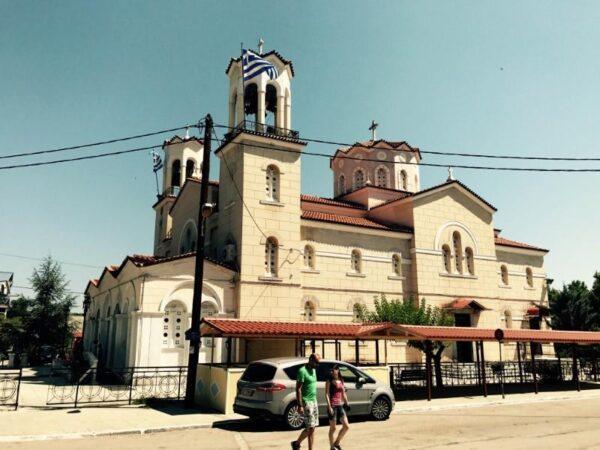
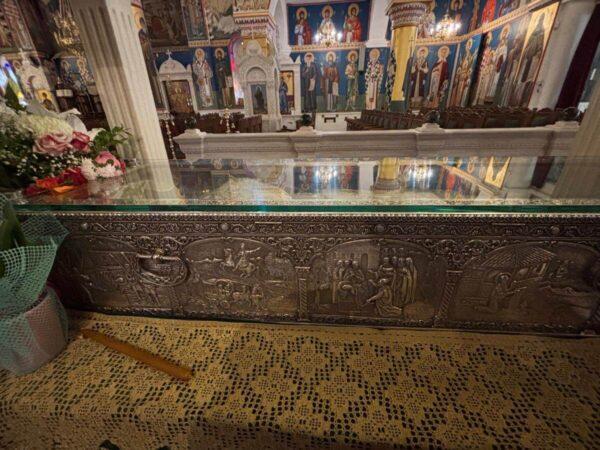
Museum of Asia Minor Culture
Located in the former guesthouse of the church, this museum exhibits religious and cultural artifacts brought by Greek refugees from Cappadocia. It serves as a reminder of the history and heritage of the people who settled in Prokopi after fleeing Asia Minor in 1924. Entrance is free. (location)
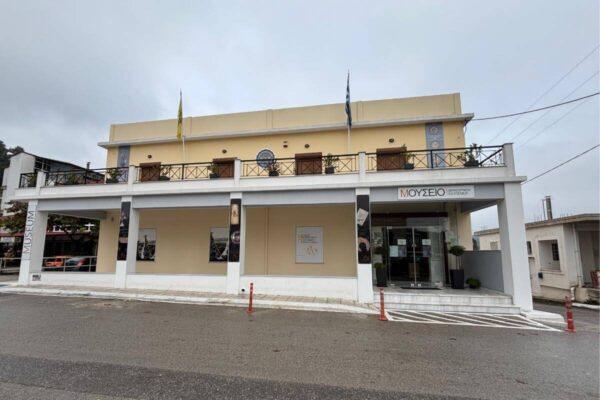
Forest Museum
A small but interesting museum highlighting the importance of forests in the local economy and daily life. Built by the villagers in a wooden hut, it showcases traditional forestry tools and provides insight into the role of woodlands in the region. (location)
Other Churches
In addition to the grand church of Saint John, you can visit:
- Church of Saint Vavylas
- Church of Saints Constantine and Helen
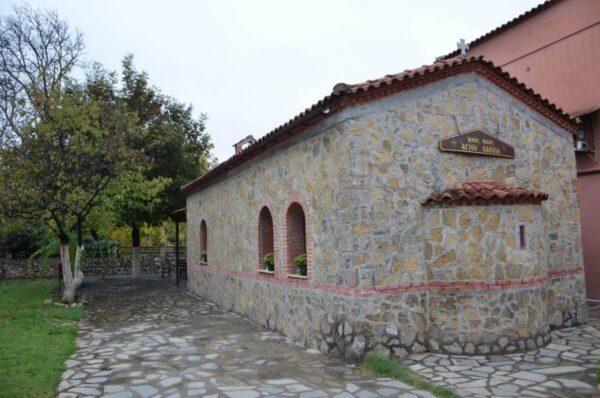
Walk the Pilgrimage Route for Saint John
Each year on May 27, thousands of pilgrims walk to Prokopi, starting from villages as far as Kastella (42 km away). When I was a lad, I used to walk it from my home in Chalkida (50 km away). Although I wasn’t religious, I very much enjoyed the walk in nature and meeting people en route. It is a unique spiritual and communal experience, culminating in an all-night festival with food, music, and wine.
Buy Local Products
Prokopi offers a variety of locally made products available in several shops and roadside stalls throughout the village. You can find high-quality honey, pastelia (sesame-honey bars), and traditional Greek pasta like chilopites and trachanas. Local herbs such as oregano, thyme, rosemary, and sage are also popular, along with handmade spoon sweets, fruit preserves, and olive oil. Additionally, keep an eye out for dried figs, walnuts, local cheeses, and homemade liqueurs, all of which make excellent souvenirs or gifts.
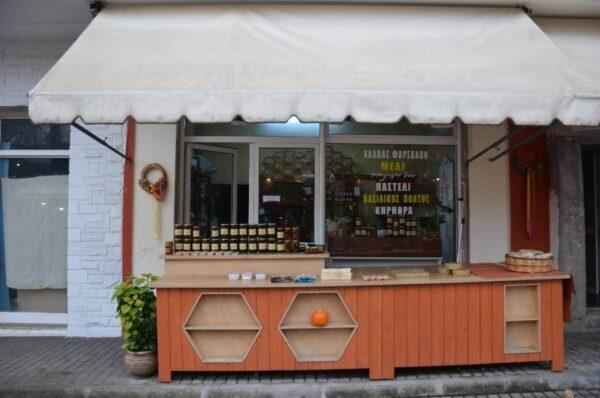
Explore Orthodox Hagiography and Religious Shops
Prokopi is a hub for Orthodox Christian art, particularly hagiography, the sacred depiction of saints and biblical scenes in Byzantine-style iconography. Several shops in the village offer hand-painted icons, meticulously crafted using traditional techniques, as well as gold-leaf decorations, wood carvings, and embroidered vestments. You can also find a variety of religious books, prayer ropes, incense, and silver crosses. Some of the artisans in the village are well-known for their skill in icon restoration, ensuring that centuries-old traditions continue to be preserved.
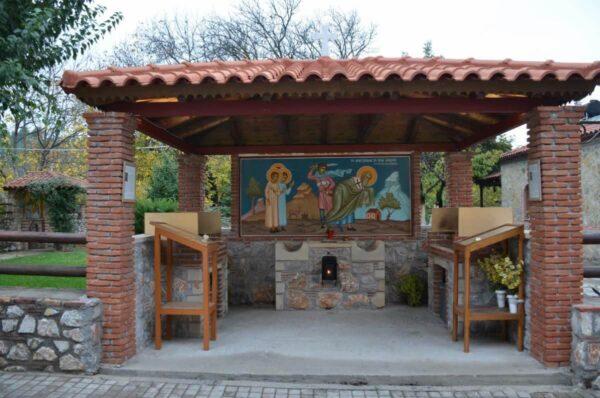
Picnic at Agios Georgios Forest Recreation Area
Located 5 km before Prokopi, this riverside spot features an old chapel, a newer church, a playground, and a natural spring—perfect for a picnic stop on the way north. (location)
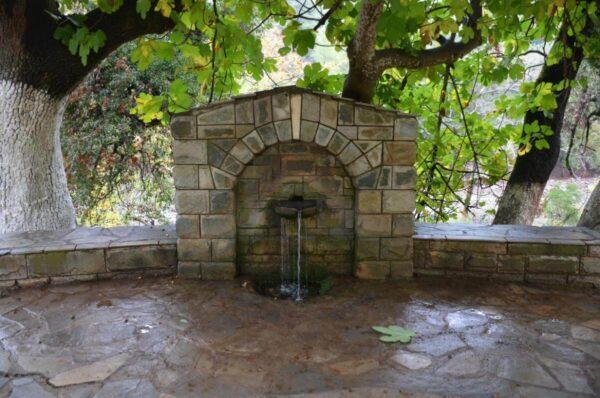
Visit the Plane Forest of Kireas River
A stunning natural area with enormous plane trees lining the riverbanks. One famous tree here has a diameter of 18 meters and is estimated to be between 500 and 2,000 years old. (location)
See the Quarry Lakes
Above the plane forest, an abandoned magnesite quarry has transformed into deep lakes (up to 100 meters) surrounded by wildlife and vegetation, forming a unique artificial ecosystem. (location)
Hike Mount Kandyli
For those who love the outdoors, a hike up Mount Kandyli offers breathtaking views and an opportunity to experience Evia’s natural beauty.
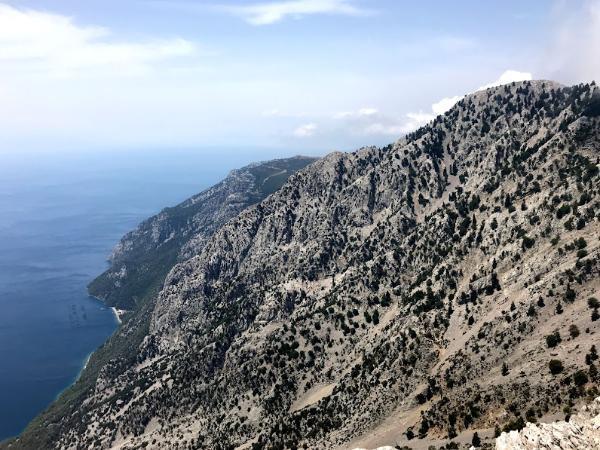
Where to Eat in Prokopi
Prokopi is famous for its grilled meats and tavernas. Some spots I recommend are:
- Taverna Oi Mouries – Traditional Greek taverna with excellent grilled meats.
- Afoi Koutsouflakis (O Ikaros) – Another great spot for meat lovers.
For coffee and sweets, check out:
Be sure to try local sweets, influenced by the village Asia Minor culinary heritence, and tyropsomo (cheese bread) at the village bakeries.
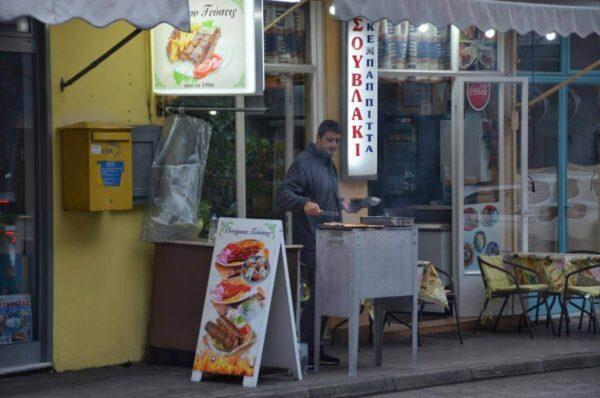

History of Prokopi
Originally called Ahmet Aga, the village was home to the Turkish administrator of the area. Before the 17th century, the region consisted of scattered settlements, but it grew in prominence when it became the administrative center of the local Ottoman ruler. After Greek independence, local residents expanded the village, though much of the land was sold to foreign landlords, causing economic and social tensions.
The most significant change in Prokopi’s history, along with its name change, came in 1924, when Greek refugees from the village of Prokopi of Cappadocia in modern-day Turkey arrived as part of the population exchange between Greece and Turkey following the Treaty of Lausanne. These refugees, forced to leave their ancestral homes, brought with them their traditions, culture, and most notably, the relics of Saint John the Russian, which they had safeguarded for generations. The construction of the church to house the saint’s remains began in 1930 and took over three decades to complete, becoming the spiritual and cultural heart of the community.
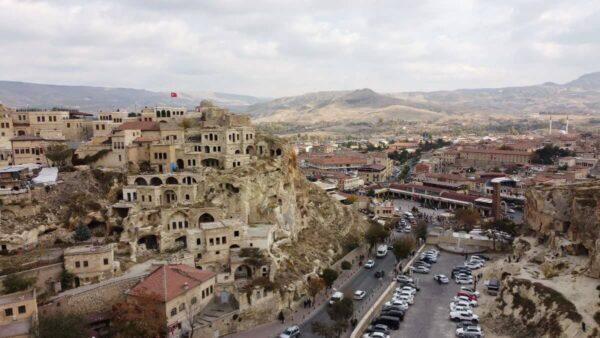
During World War II, Prokopi endured hardships under German occupation, with infrastructure damage and economic struggles. In the 1970s, local movements sought to reclaim land from absentee landlords, but these efforts largely did not succeed. Despite these challenges, Prokopi has flourished into a unique blend of religious significance, rich cultural heritage, and breathtaking natural beauty.
Places to Visit nearby
- Mantoudi – A small town with a lively market.
- Limni – A charming coastal town with beautiful views.
- Edipsos – Famous for its thermal baths.
- Agia Anna Beach – A long sandy beach great for swimming.
Video
Photos
View (and if you want use) all my photographs from Prokopi in higher resolution.
